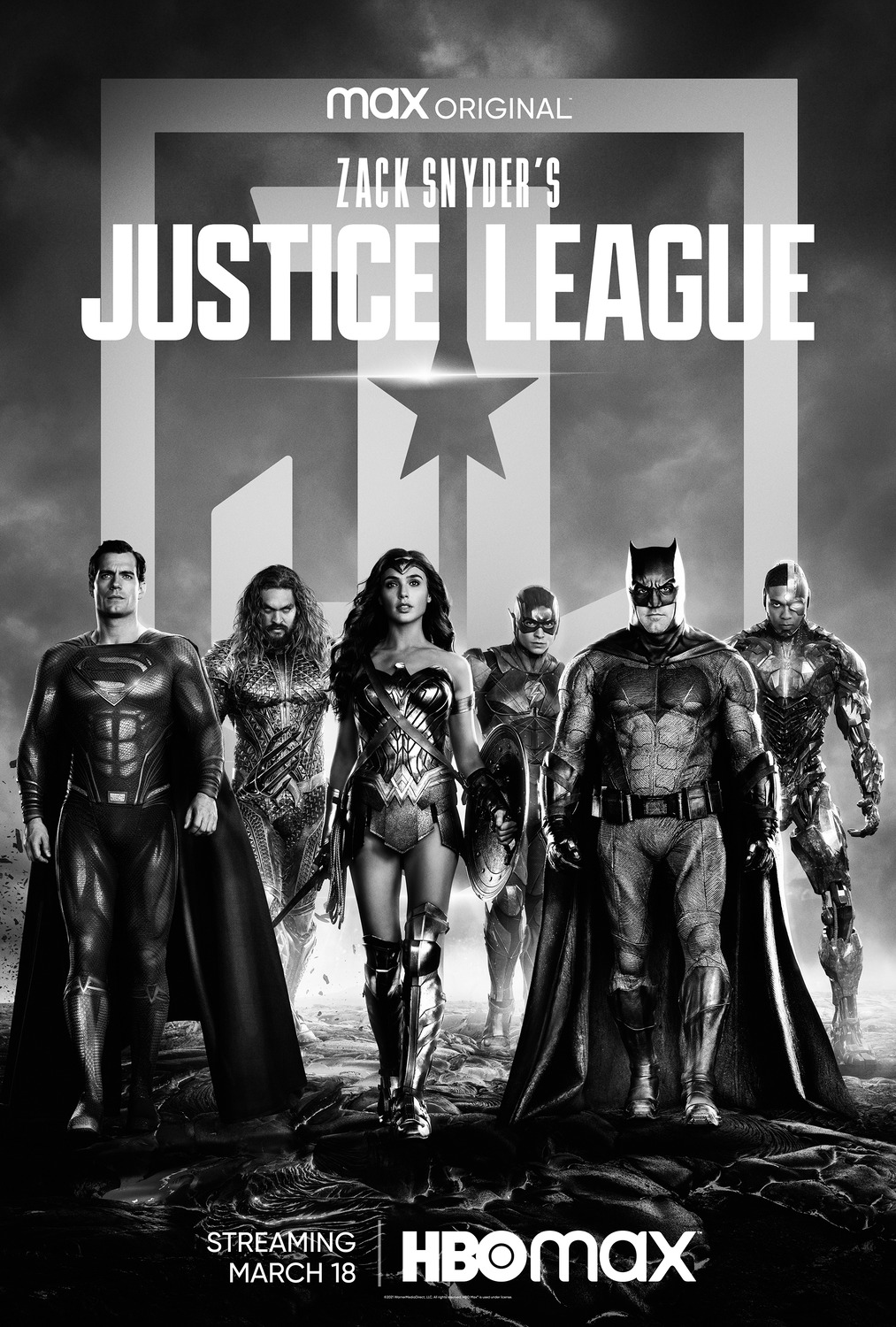Well, if we’ve all been reminded of anything by the release of Zack Snyder’s Justice League, it’s that there’s always another layer to a story. And in this case, that’s true not only of the film itself but also in all the behind-the-scenes goings-on, which are just now seeing the light of day.
Three years ago, after sitting in a darkened theater to watch the trainwreck that was 2017’s Justice League, I didn’t pull any punches in going off on both writer/director Zack Snyder (for his perceived incompetence) and Warner Bros/DC (for hiring him to helm the flick in the first place).
Among my observations at the time:
- “…it’s a bloated, low-rent mess”
- “…it’s clear [that co-screenwriter Chris] Terrio was trying hard to inject a little humor, but it’s safe to say no one told him it takes more than a series of clunky throw-away one-liners to do it.”
- “…[the film’s antagonist] Steppenwolf is perhaps the most disappointing villain to come down the superhero highway, looking more like an unfortunate Pixar rendering mistake than anything worth rallying the troops against.”
- What few bright spots there are…surely came courtesy of The Avengers’ writer/director Joss Whedon, who was brought in late to retool the script.
Whoops.
As we all now know, comparatively little of Snyder’s original vision made it to the big screen in that original version. Before the film went into post-production, Snyder left the project to mourn the suicide of his daughter Autumn. Even before that, though, the writing was clearly all over the wall. Warner Bros’s then-CEO Kevin Tsujihara (who stepped down in 2019 following sexual misconduct allegations) reportedly called a rough cut of the film “unwatchable”… and that was after he had assigned two corporate bigwigs to babysit Snyder every single day of filming.
Whedon was brought on board immediately. (It’s not hard to imagine, in retrospect, that he had been waiting in the wings with bated breath for months.) He ordered dozens of re-shoots, re-wrote swaths of the script, chopped others, and turned the film into his own (though, oddly enough, his only inclusion in the credits is as co-writer).
Little did many of us know at the time, but Snyder’s original vision bore a sharp contrast to what made it to theaters. And while I wouldn’t wish a complete re-watch of the 2017 Justice League (or “Josstice League”, as it’s now labeled) on anyone, it wouldn’t hurt (too much) to just roll the first ten minutes or so as a sharp contrast before sitting down for a viewing of the Snyder Cut, now available on HBO Max.
This new (and greatly improved) Justice League not only redeems Snyder, who many moviegoers and critics (including, yes, yours truly) mercilessly attacked at the time but also points a damning finger at Whedon for the abject disaster that was the 2017 version. It doesn’t take long to realize that the content that Whedon cut was vital to the story, including copious amounts of history, context, and character development, all of which, it turns out, make a colossal difference. Much more importantly, the overwhelming majority of the excised footage focused on POC and women, which begs the question (or serves as an indictment) on whether Whedon lives somewhere on the spectrum between sexist/discriminatory and misogynistic/racist.
Indeed, when the Snyder Cut made its debut, social media lit up like a Christmas tree with a barrage of anti-Whedon posts. (Search “whedon snydercut” on Twitter for a sampling.) It’s impossible to draw any other conclusion that Whedon is empirically a toxic individual.
As for my aforementioned ill-informed observations, well, we now know that it was, in fact, Whedon who was responsible for turning Justice League into a low-rent mess, for injecting most (if not all) of the clunky throw-away one-liners, and even for making Steppenwolf look like an unfortunate Pixar rendering mistake. (The comparison between the Whedon and Snyder versions of the film’s villain is, frankly, laughable.)
This new rendition gives a clear indication that Snyder, though not a perfect filmmaker by any means, certainly knew what he was doing when putting together Justice League in the first place. With all the restored context and backstory (along with other notable changes, including a wholly different score and vastly improved visual effects) suddenly the film, well—makes sense. More than that, obviously, the added attention to the female and minority characters gives the film a palpable (and needed) sense of diversity, inclusion, and empowerment.
On top of all that, Zack Snyder’s Justice League is, at its core, a solid, entertaining, and thrilling film. Not a cinematic masterpiece, to be sure, but certainly one hell of a comic book thrill ride. And though the film’s 242-minute runtime may seem daunting, time-wise it’s no different than binging the first four episodes of Bridgerton back-to-back (which I guarantee was very much a thing a few months ago). Plus, the Snyder Cut is conveniently split into six half-hour-ish-long parts (plus a nine-minute prologue and 20-minute epilogue), allowing you to take breaks and fold some laundry, grab a snack, or even come back the following day.
There will no doubt be much, much more conversation about Whedon’s grievous behavior and (lack of) sensibilities in the coming weeks and months (and it will be well-deserved), but strictly in the cinematic world, the Snyder Cut serves as utter redemption for a man whose vision clearly deserves its place in superhero flick canon.
